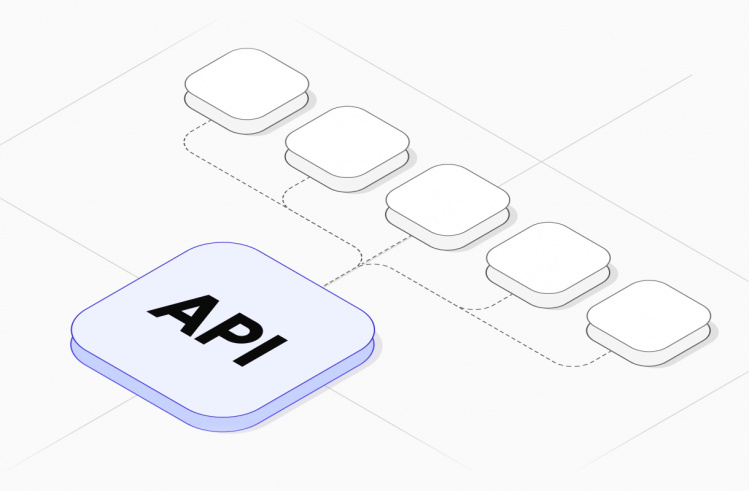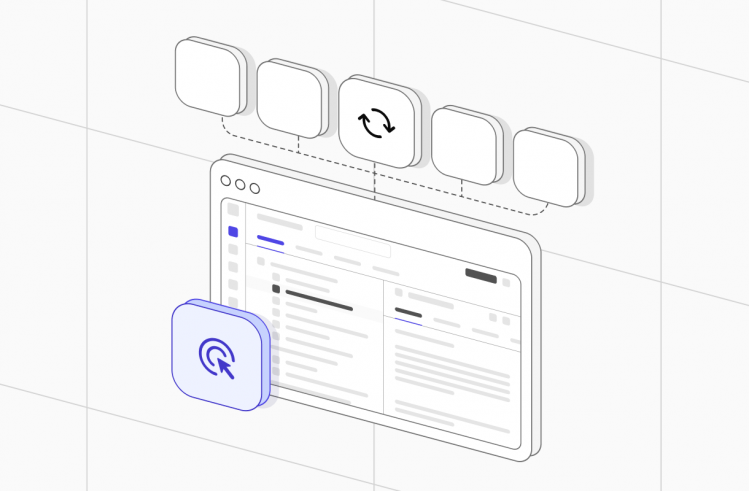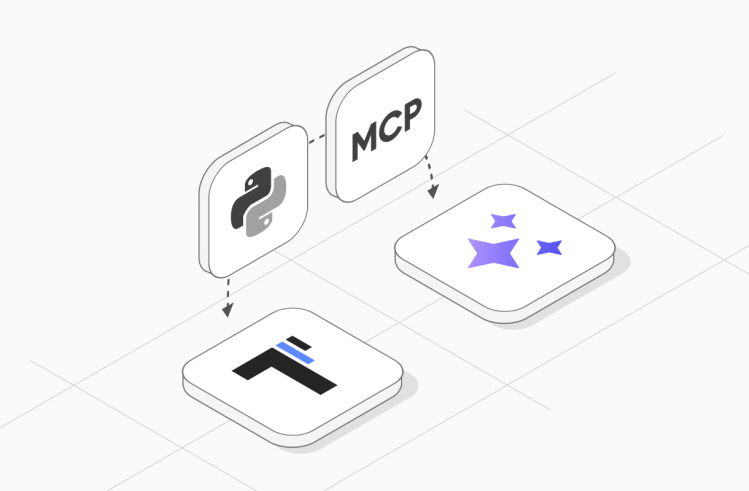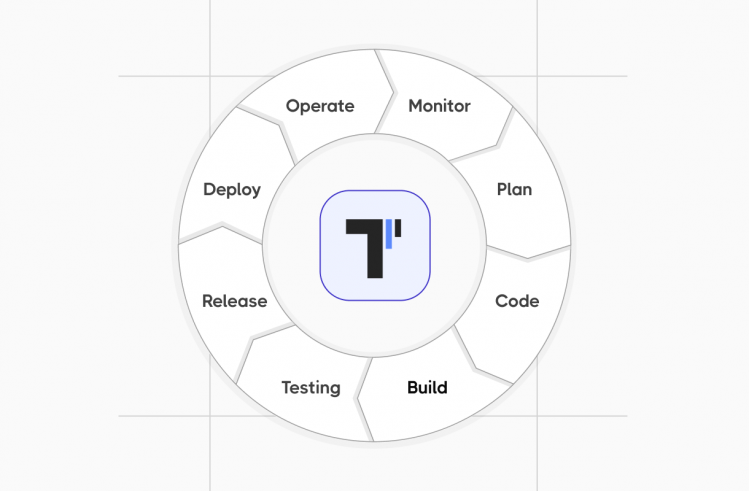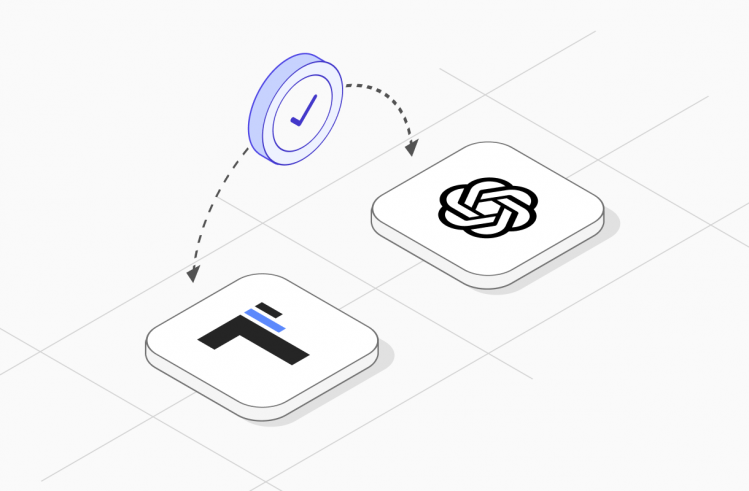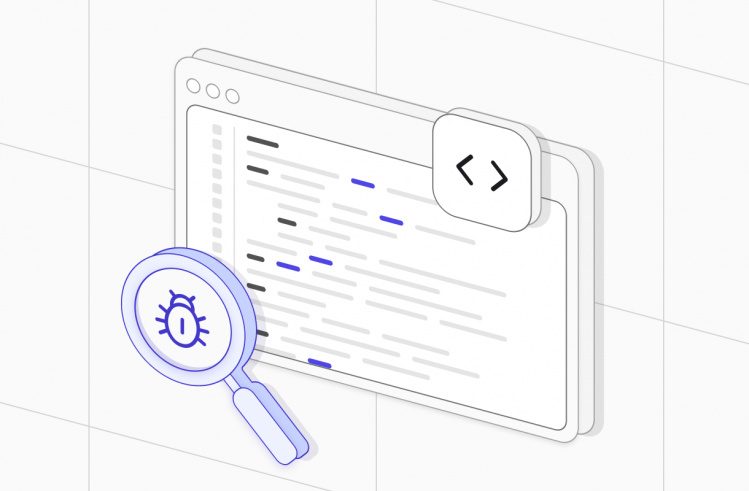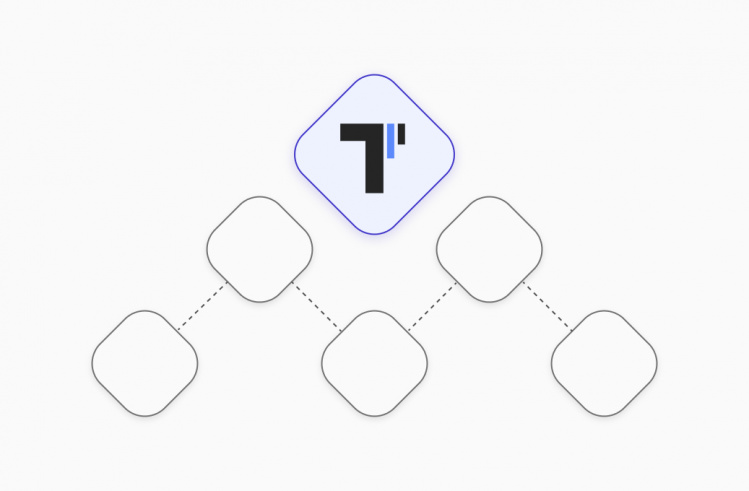In software development, the term Dog food means something different. It is not about dog food or toys. It refers to software developers and companies using their own products and services, just like their customers do. In this article, we will help you understand what is dogfooding, explain why it matters. How to do Dogfooding testing well, and what challenges you might face 😉
Dogfooding Essence in Business & Software Development
Imagine a chef who will not taste their dish. It makes you think, doesn’t it? The same idea applies to businesses that do not use their products. Here is the answer to what is dogfooding. Consuming own software products or services — often called Dogfooding. It shows how much a company believes in what creates. It helps the development team see and experience the product value directly. It is a great opportunity for the development team to see and experience the product value directly.
Dogfooding: meaning and purpose
Dogfooding, or Eating your own dog food, helps you see what your customers see. It provides valuable insights. You can find out what problems they face and find ways to make things better as the development team focuses on understanding how users experience with product and what they need. Nowadays, it is a common approach that leads to better solutions. Let’s distinguish,
The main goals of dogfooding are to:
- Improve Product Quality. When internal teams use the software application often, they can spot bugs, glitches, or usability issues early in the development cycle.
- Check Real-World Scenarios. Dogfooding replicates real-world use cases, providing insights into how the program performs in practical situations.
- Better User Experience. Allows a look at the product’s design and flow from a user’s viewpoint.
- Save time and resources. Prevents costly post-launch fixes and fiasko on the market.
- Speed Up Product Development. Feedback can make the development process faster. Problems are found and fixed more quickly.
How does dogfooding relate to quality assurance (QA)?
Dogfooding occupies a valuable place within Quality Assurance (QA) and software testing by serving as an additional layer of testing strategy during the Software Development Life Cycle (SDLC).
The same applies to the Quality Control process. Dogfooding strengthens quality confidence and functionality relevance. By using the product internally, teams act as both creators, providing immediate feedback on functionality, performance, and usability. This serves as a hands-on validation of the product’s quality and ensures it meets expectations before release. Here is how these three aspects contribute to delivering a high-quality, user-focused product:
| Dogfooding | Quality Control (QC) | Quality Assurance (QA) | |
| Focus | Real-world usage and subjective experience | Objective adherence to predefined standards | Processes and systems to ensure quality |
| Participants | Internal users (developers, stakeholders, etc.) | QA specialists or automated testing systems | Entire team, including QA engineers and developers |
| Approach | Informal, experience-based testing | Formal, process-driven defect detection | Proactive, process-oriented quality planning |
| Goal | Identify usability and functional issues early | Ensure the product meets defined standards | Prevent defects and ensure continuous improvement |
| Timing | During development and before formal release | Post-development or at specific checkpoints | Throughout the development lifecycle |
| Output | Feedback on usability, functionality, and workflow | Reports on bugs, defects, and non-conformance | Quality processes, guidelines, and test plans |
While QA/QC ensures the product meets defined quality standards through structured testing, dogfooding focuses on improving the standards compliance and overall experience, making both practices essential for successful in-market delivery.
Dogfooding in Test Management and QA
In test management, dogfooding plays a role in practice for improving the efficiency and effectiveness of testing workflows. Namely:
→ Refines test strategies. QA manager can refine test plans. Feedback from usage helps update and optimize existing test cases or create new ones based on practical scenarios and challenges encountered.
→ Optimizes defect management. It enables early identification of bugs and performance issues, which can then be logged, prioritized, and tracked in the test management system.
→ Easily identifies gaps in coverage. Internal users interact with diverse patterns by covering unscripted workflows or edge cases not included in predefined test cases.
→ Accelerates QA iterations. Quality assurance teams address issues more quickly, which ensures iterative improvement throughout the Agile development cycle.
→ Fosters better collaboration across teams by building trust within a company.
Types of Dogfooding
Dogfooding can vary in form depending on the purpose and scale. Here are a few common types:
- Internal Dogfooding. In this scenario, a company’s employees use the product in their daily operations, testing it rigorously within the organization. This can reveal critical issues before its release to external customers.
- External Dogfooding. Some companies allow a limited group of users, often tech-savvy customers or trusted partners, to use early versions. This approach expands the testing environment to include real-world feedback while keeping the product semi-private.
- Parallel Dogfooding. Here, the company uses the product alongside existing alternatives. Employees might split time between the new product and a competitor’s tool to identify key performance or usability differences, helping refine the final product before a full release.
- Continuous Dogfooding. This ongoing process involves using the product consistently within the organization to help drive iterative improvements over time. Continuous dogfooding is often part of a company’s Agile or DevOps approach, ensuring the software remains relevant and up-to-date.
Dogfooding VS Internal Beta Testing
The origins of the term Dogfooding are somewhat murky, though it became widely recognized in tech circles during the 1980s. A popular story credits Microsoft manager Paul Maritz, who reportedly sent a memo titled “Eating our own Dogfood,” urging his team to use Microsoft products internally to enhance their quality.
Overall, whether you call it “Dogfooding,” “Drinking your own champagne,” or “Eating your own cooking,” the philosophy remains: companies should have faith in their products by being their users and validating quality before they reach customers.
Dogfooding and beta testing involve using pre-release versions of a product, they differ in:
| Dogfooding | Beta Testing | |
| Purpose | Internal testing is where the team uses the App as end users. | External testing is where selected users outside the team try the product. |
| Participants | Team members, developers, or internal stakeholders. | External users, customers, or a targeted audience. |
| Goal | Identify usability issues, functionality gaps, and bugs from an insider perspective. | Collect real-world feedback, discover edge cases, and validate user satisfaction. |
| Environment | Typically tested in controlled, internal environments. | It is tested in diverse, real-world environments by various users. |
| Feedback | Provides early feedback with a focus on internal team insights. | Offers broader, unbiased feedback from real users and varied use cases. |
| Stage | Performed during earlier stages of development. | Conducted after dogfooding, closer to release. |
Thus, dogfooding is internal, focused on aligning a developed product with the needs and expectations of its employees as a target group. It is ideal for refining a product early on, as the team understands the vision and detects issues quickly.
At the same time, beta testing usually involves external users who provide feedback from a customer’s perspective and readiness for launch. It is their validation of new features in real-world conditions.
Both practices are essential for a robust product development cycle. Beta testing only offers insights into how users may respond to the product while dogfooding signals the company’s confidence in its product.
Enhancing Product Quality and User Experience
Dogfooding is more than just routine quality assurance checks. These tests are important, but they usually happen in controlled settings. This means they might not show how users interact with the product in real life. Dogfooding helps fix this problem.
When employees use the product in their everyday work, companies can find hidden usability issues and design problems. They can also identify workflow delays that might be missed otherwise. This process creates a stronger and more user-friendly product that makes customers happy and builds brand loyalty.
The Importance of Dogfooding for Product Development
It is very important for creating great products that connect with users. When companies use their own products in real work, they learn how well these products work and find out how to improve the user experience.
The internal usage of the company helps establish corporate responsibility and build a culture focused on quality and meeting customer needs. The sense of accountability among the team drives them to produce a higher-quality product. It ensures that products are thoroughly tested and improved before they get to users. As a result, it leads to happier customers, better brand loyalty, and a stronger advantage over competitors.
Building Trust Within and Outside the Organization
Once again, Dogfooding is more than just making better products. The main goal of dogfooding is to encourage a culture of openness, responsibility, and teamwork. When leaders use and support their own solution, it shows everyone how much they believe in its quality.
This builds trust in the company’s promises. This sense of openness goes beyond just the teams inside the company. When customers see that a company truly uses its own products, it creates a feeling of realness and trust. These qualities are very important in today’s tough market.
Implementing Dogfooding Tech in Your Organization
To set up a good dogfooding testing process at your company, you need a clear plan. Make a straightforward way to start this product management program.
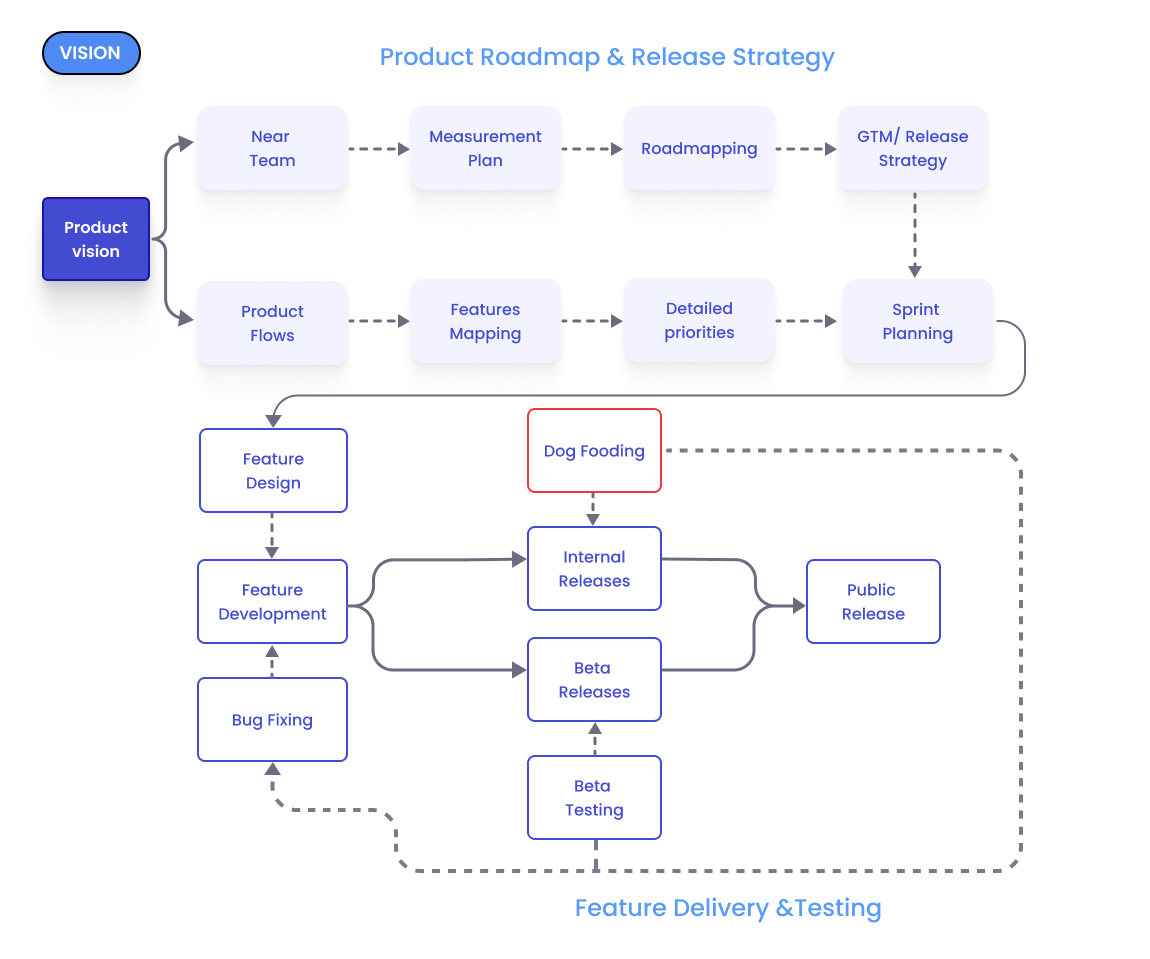
Then, get people from different departments involved, not only the development team. This will help you get different views. Most importantly, create an environment where feedback is valued. See feedback as a chance to grow and improve.
Let’s consider the most common stages of this type of testing.
#1: Identifying Areas for Dogfooding
Not all products or features are the same when it comes to dogfooding. The main idea is to find areas where internal use can give valuable insights and help solve customer pain points better. Start by thinking about the main functions, workflows, or features that matter most to the product’s value. Also, focus on features or products that are getting big updates, redesigns, or are in alpha or beta testing.
#2: Make Prioritization
To initiate the process, it is recommended to draw a road map and feature prioritization scope to understand the scope of work. Prioritizing features ensures that the most valuable and feasible tasks are addressed first, optimizing resource allocation and maximizing impact. In other words, you will be able to make sure that you have not chosen the completely wrong direction.
After prioritizing features, create a product roadmap that visualizes the design and development timeline and milestones. The roadmap should outline public releases with specific milestones and dates to support a structured approach to development. Implement a phased release strategy, such as alpha/beta testing and phased rollouts, to gather early feedback and mitigate risks. Regularly collect and analyze feedback from users and stakeholders to adjust priorities and refine the roadmap.
#3: Lead Team Onboarding
Engage stakeholders. Get buy-in from all relevant teams, including development, QA, product management, and support. Provide heir training.
#4: Proceeding Dogfooding testing in your testing workflow
Choose a product version and environment for testing. Provide team access to the App and a way of interaction. Make sure all team members have the necessary credentials and permissions to utilize the full range of features in the app.
#5: Setting Up a Feedback Loop for Continuous Improvement
A strong feedback system is key to successful dogfooding. If there is no organized way to gather, analyze, and act on employee feedback, the process loses its value. It can turn into just a formality. Create clear ways for employees to share their thoughts, ideas, and issues.
Online surveys, special communication tools, or regular feedback meetings can help. However, just collecting feedback is not sufficient. Make sure that feedback is recognized, quickly handled, and included in the roadmap for the product’s ongoing improvement.
Who Should Participate in Dogfooding Testing?
Dogfooding works best when employees from various departments, roles, and levels within a company participate. Here’s a breakdown of who can contribute effectively:
- Product Development Teams. QA engineers, Developers, designers, and product managers are primary participants, as their direct feedback helps improve functionality, usability, and performance. Their firsthand experience using the product can uncover technical issues early on, making it easier to resolve before release.
- Customer Support Teams. Since customer support representatives understand common customer pain points, they can test the product while simulating real user issues. Their feedback is particularly valuable for ensuring the product is user-friendly and identifying potential challenges customers might face.
- Sales and Marketing Teams. These teams can assess the product from a messaging and positioning perspective. Their feedback can help refine the product’s value propositions, align it better with market expectations, and shape marketing strategies.
- Executive and Leadership Teams. Having senior leadership use the product not only demonstrates a company-wide commitment but also ensures top-level insights are considered in the product’s development. Leaders can provide feedback on strategic alignment and highlight areas for improvement that align with the company’s goals.
- Cross-functional Employees. Encouraging employees from various departments who are not directly involved in product development to use the product helps capture fresh perspectives. Cross-functional dogfooding can reveal unexpected usability issues, as these users approach the product more like an average customer would.
By involving a broad spectrum of employees, dogfooding provides a comprehensive experience of the product and well-rounded feedback, leading to a more robust, customer-aligned product. It also creates a culture of ownership and accountability, as employees feel invested in the product’s success and are more likely to advocate for its improvement.
What is Dogfooding in Software Product Management?
In product management, dogfooding is the practice of having product managers and team members use their own product to evaluate its quality and usability firsthand. By using the product in their day-to-day work, product managers can identify pain points, areas for improvement, and unanticipated use cases that may not emerge during traditional testing phases. This hands-on approach allows product managers to validate the product’s alignment with customer needs and make data-driven decisions based on real user experiences within the team.
For product managers, dogfooding serves as a continuous feedback loop, helping to shape the product roadmap by surfacing issues and prioritizing features that will improve the customer experience. Additionally, it reinforces a sense of ownership and accountability, as product managers can directly influence changes based on their own insights, driving a higher level of confidence in the product before it reaches the market.
Dogfooding in UX Design Testing
Dogfooding plays a crucial role in UX (User Experience) design testing, where designers and team members experience the product as end-users would. By “living the user experience,” designers gain deeper insights into the product’s usability, navigation, and overall appeal. This approach helps them identify friction points and intuitive flows that may not be apparent in wireframes or prototype reviews.
Incorporating into UX testing ensures that the design team can assess how their decisions impact actual use, often revealing overlooked details in layout, accessibility, and interaction. Moreover, it empowers designers to refine elements like button placements, fonts, and color schemes based on real interaction feedback. Overall, dogfooding in UX design testing provides a more empathetic and practical understanding of the product, leading to a more polished and user-friendly final design.
Measuring the Overall Impact of Dogfooding
To understand its effectiveness — companies must assess its impact on product quality, user satisfaction, and overall development processes. Here are key metrics and methods for evaluating dogfood’s impact:
- Bug and Issue Resolution Rates: One of the clearest indicators of dogfooding’s impact is the number of bugs identified and resolved prior to external release. Tracking the frequency and severity of issues found here helps measure its effectiveness in improving product stability and functionality.
- User Satisfaction Scores (Internal): Internal satisfaction surveys among participating employees can reveal insights into usability and product alignment with user needs. Regularly gathering feedback provides a benchmark for improvement and offers valuable data on how well the product meets expectations.
- Feature Enhancement Suggestions: A successful testing workflow often generates suggestions for feature enhancements and optimizations. Tracking the number and types of improvement ideas quantifies the contribution to product innovation.
- Time to Market: By identifying and addressing issues early in the development cycle, dogfooding can reduce the time spent on post-release bug fixes, accelerating the product’s time to market. Measuring any reduction in development and testing cycles helps assess dogfooding’s impact on overall product development efficiency.
- Customer Support Case Reduction: When dogfooding catches issues that might have otherwise reached end-users, it can lead to fewer customer support inquiries. Monitoring support case trends after the product release can reveal if dogfooding effectively minimized common user issues, thus reducing support costs and improving the user experience.
- Employee Engagement and Buy-In: Commonly it fosters a sense of ownership among employees, increasing corporate engagement and enthusiasm. Employee participation rates and feedback can be measured to assess how dogfooding enhances company-wide support for the product, which often translates into stronger internal advocacy for continuous improvement.
Challenges and Solutions in Dogfooding
Although dogfooding has many benefits, companies may face some challenges when putting it into action. It is important to know these problems and QA managers must plan to deal with them. Open communication and strong support from leaders are crucial. Also, creating a culture where everyone shares responsibility can help solve these issues. In the end, when the testing is applied well, it allows to make products better and enhance the user experience.
Overcoming Resistance and Encouraging Participation
One of the biggest problems companies deal with is resistance from workers. Some people see it as more work added to what they already do. Others might feel unsure about giving negative feedback because they worry about facing consequences. To fix this, it’s important to explain the reasons behind dogfooding. Tell them how joining in helps the product succeed and leads to a better customer experience. Encourage participation by offering rewards, creating recognition programs, or including it in performance reviews.
Addressing Feedback and Making Iterative Changes
Receiving lots of feedback is good, but it can be too much if you do not handle it well. It’s very important to set up a way to gather, sort, and address feedback in an organized and timely way. Use project management tools, make specific channels for feedback, or have team members help with sorting and processing feedback.
Do not let feedback stagnate for a long time. It’s also important to be open with employees about which suggestions you are using, which ones you are thinking about, and which ones you will wait on.
- Categorize feedback: Sort feedback by type, like bugs, feature requests, or usability issues, or by product area for easier review.
- Prioritize feedback: Focus first on serious problems that affect core function or user experience.
- Iterate based on feedback: Make changes in steps, test them within the team, and gather more feedback before updating customers.
In conclusion, dogfooding is more than just a term
Using firsthand allows focus on improvement from the user’s perspective in the development process, at the same time to build trust and loyalty among employees. This can raise the quality and strengthen reputation both inside and outside the company.
Dogfooding is a simple way to spark new ideas. Often reveals subtle issues or defects that traditional QC processes, such as automated and manual testing, may not catch. For example, minor UX flaws, workflow inefficiencies, or unexpected user behaviors can surface through it unexpectedly.
If you want to improve your product development process, think about making dogfooding a main practice 👍
Frequently asked questions
What are the first steps in starting dogfooding in a company?

Start by distinguishing a feature scope for internal beta testing. Next, gather a group of employees who are interested. Try to include people from different departments in this kind of testing and share their thoughts. A test manager might organize the process, and make sure that the feedback will be collected and handled well.
How is dogfooding different from beta and alpha testing?

It is a process where a company uses its product internally before releasing it to the public. Unlike alpha and beta testing, which are formal testing stages involving external or semi-external users to identify bugs and usability issues, dogfooding emphasizes employees actively using the product in real-world settings. While alpha testing typically focuses on finding critical bugs and beta testing on gathering broader user feedback, dogfooding offers insights into real user experiences, often uncovering unique, practical feedback that formal testing may miss.
Dogfooding vs. Exploratory Testing

Dogfooding and exploratory testing both aim to improve product quality, but they differ in approach. Exploratory testing is a structured approach where testers actively search for issues by exploring without predefined test cases. Dogfooding, however, involves using the product naturally, as an end-user would, rather than deliberately trying to break it. This real-world application can reveal usage patterns, missing features, and overlooked issues, whereas exploratory testing is usually conducted as a more controlled testing type.
What is an example of dogfooding?

A well-known example of dogfooding is how Microsoft employees use pre-release versions of Windows operating systems in their daily tasks, helping identify and fix potential issues before public release. Similarly, Google has employees use early versions of Google Workspace tools (like Gmail or Google Docs) internally to understand user experience, uncover practical issues, and refine features based on genuine usage data.
Can small companies or startups benefit from dogfooding?

Yes, small companies and startups can greatly benefit from dogfooding. Since resources for extensive testing may be limited, dogfooding allows team members to test the product naturally as they use it, helping to refine the user experience, catch early bugs, and iterate faster. It can also foster a culture of ownership and accountability, where team members feel invested in the product’s quality and success.
How does dogfooding contribute to continuous improvement?

It provides ongoing, authentic insights into product performance and usability, which fuels continuous improvement. Testing in such a way regularly, team members can continuously identify areas for enhancement, allowing for iterative improvements and fast adaptations. Additionally, the feedback loop created by dogfooding can help refine functionality, optimize user experience, and increase reliability, ultimately leading to a more robust, user-focused product over time.


